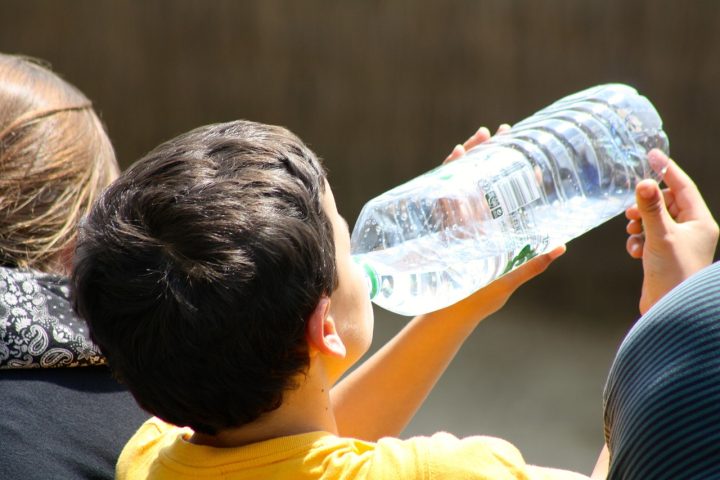
- How do heat waves occur?
- What effects will the heat waves have on people’s health?
- The biology of illnesses caused by heat
- Effects of increasing heat waves on land and water
We have discovered an unheard-of and ongoing rise in the earth’s temperature since we first started keeping track of them in the early 1980s. Future heat waves will occur more often as a result of this trend, which shows no indications of abating. The fact that the past ten or so years have seen some of the hottest summers ever recorded makes this obvious. These heat waves will also last longer than ever before and reach greater maximums.
- Study on the impact of porn viewing on men’s relationships with women
- The relationship between parental work stress and psychological adaptation of children and adolescents
How do heat waves occur?
Unusually high temperatures persist for a long time during a heatwave, which is brought on by elevated air pressure in a particular region. Excessive pressure inside of this area starts to pull air from the higher atmosphere; this air will condense and start to warm. This phenomena will set off a domino effect that prevents cloud shadowing and disrupts wind patterns, further allowing the sun’s heat to affect these stationary circumstances.
According to forecasters and other weather experts, these heat waves will last longer, starting in the late spring and lasting as late as the beginning of the fall. The accumulated evidence indicates that in the second part of the twenty-first century, intense heat waves will become commonplace. This will not only have an effect on the stocks of wildlife and other animals, but it also portends grave health concerns for the future population.
What effects will the heat waves have on people’s health?
It has been shown that periods of extreme heat will see a rise in sickness and physical ailments. Ailments including heat-related mortality are among them. Increases in “death by heatstroke” are becoming increasingly noticeable, as seen by noteworthy incidents like the heat-related deaths that occurred in Canada and Japan in July 2018 or the US Pacific Northwest in 2021. In metropolitan regions, where most people reside, these heat-related ailments are significantly more prevalent.
According to estimates, heat waves cause 700 lives annually, and the harmful health impacts will only get worse in the years to come. Oregon, Idaho, and Washington had persistent excessive heat in 2021, with temperatures up to 116°F (46.7°C). The national meteorological agency came to the conclusion that everyone should stay indoors and that even casually strolling outdoors would be risky.
The “urban heat island effect” makes metropolitan regions more vulnerable to extreme heat. This happens when asphalt traps heat during the day and only releases it at night, preventing the environment around it from naturally cooling. This will not only raise energy expenditures and air pollution levels, but it will also have an impact on deaths from heat-related causes.
The biology of illnesses caused by heat
Water loss peaks and equilibrium is disturbed when a person has heatstroke. Blood will thicken when water levels drop, drastically reducing the amount of oxygen available. The heart rate will rise in a fruitless effort to pump more blood to make up for this deficiency of oxygen, further heating the body. If the person does not quickly seek medical help, the cycle ultimately gets out of hand and can be fatal. This will happen when the temperature rises over 40oC. (104oF).
At a subatomic level, cell membrane proteins will denature. All of their remaining contents, including the cytoplasm and cellular machinery, will stop working completely and leak. This happens as a result of a necrosis reaction after an inflammatory reaction. Necrosis is often brought on by strong physiochemical stimuli, although it can also be brought on by sudden changes in temperature, pH, or osmotic pressure. Damage to the liver, blood clots, and failure of essential organs are all signs of this occurrence. Fainting, cramps, and other physical symptoms are among them.
Effects of increasing heat waves on land and water
Because to the general increase in global temperature, there are more extreme climatic occurrences now. These include heat waves, floods, and droughts. Omid Mazdiyasni and colleagues were able to examine heat-related fatalities in India between 1960 and 2009 thanks to data gathered from the Indian metrological department. Heat-related fatalities increased by 146% during this time period, with a 0.5oC mean temperature rise.
Probabilistic metrological projections indicate that these figures will correspond to lower latitude places, such as India, Portugal, northern Australia, and many others, and will follow the warming trend. Countries with lower latitudes excluded, such as Canada and Japan, are equally impacted.
Even while global warming has destroyed entire ecosystems, if the focus were only on human health, the situation would be terrible. Early in the twenty-first century, there has been an increase in marine animal mortality, which is consistent with the increased metabolic needs of ectothermic marine life. In the Gulf of Alaska, Norway, and other colder areas of the northern hemisphere, there has been evidence of nutrition being jeopardized by heatwaves. The bioactivity and population of Pacific cod and crab were shown to have decreased as a result of the heatwaves of 2014–2016.
A considerable reduction in trophic transfer energy is seen due to the drastic transformation of the cold water environment (Gaichas et al., 2015). The warmer environment favors the growth of less-lipid-rich zooplankton, microplankton, and even bigger crustacean zooplankton. This would subsequently endanger the last stages of the food chain, reducing the energy and bioactivity of fish and mostly harming people. At least 3 billion people rely on fish for up to 20% of their typical protein intake, even though this is just one area of food production.
References:
- Schramm PJ, Vaidyanathan A, Radhakrishnan L, Gates A, Hartnett K, Breysse P. Heat-Related Emergency Department Visits During the Northwestern Heat Wave – United States, June 2021. MMWR Morb Mortal Wkly Rep. 2021 Jul 23;70(29):1020-1021. doi: 10.15585/mmwr.mm7029e1. Erratum in: MMWR Morb Mortal Wkly Rep. 2021 Aug 13;70(32):1103. PMID: 34292925; PMCID: PMC8297695.
- Stillman JH. Heat Waves, the New Normal: Summertime Temperature Extremes Will Impact Animals, Ecosystems, and Human Communities. Physiology (Bethesda). 2019 Mar 1;34(2):86-100. doi: 10.1152/physiol.00040.2018. PMID: 30724132.
- Williams CM, Buckley LB, Sheldon KS, Vickers M, Pörtner HO, Dowd WW, Gunderson AR, Marshall KE, Stillman JH. Biological Impacts of Thermal Extremes: Mechanisms and Costs of Functional Responses Matter. Integr Comp Biol. 2016 Jul;56(1):73-84. doi: 10.1093/icb/icw013. Epub 2016 Jun 1. PMID: 27252194.
- Guo Y, Gasparrini A, Li S, Sera F, Vicedo-Cabrera AM, de Sousa Zanotti Stagliorio Coelho M, Saldiva PHN, Lavigne E, Tawatsupa B, Punnasiri K, Overcenco A, Correa PM, Ortega NV, Kan H, Osorio S, Jaakkola JJK, Ryti NRI, Goodman PG, Zeka A, Michelozzi P, Scortichini M, Hashizume M, Honda Y, Seposo X, Kim H, Tobias A, Íñiguez C, Forsberg B, Åström DO, Guo YL, Chen BY, Zanobetti A, Schwartz J, Dang TN, Van DD, Bell ML, Armstrong B, Ebi KL, Tong S. Quantifying excess deaths related to heatwaves under climate change scenarios: A multicountry time series modelling study. PLoS Med. 2018 Jul 31;15(7):e1002629. doi: 10.1371/journal.pmed.1002629. PMID: 30063714; PMCID: PMC6067704.
- Chen, L., Deng, H., Cui, H., Fang, J., Zuo, Z., Deng, J., Li, Y., Wang, X., & Zhao, L. (2017). Inflammatory responses and inflammation-associated diseases in organs. Oncotarget, 9(6), 7204–7218. https://doi.org/10.18632/oncotarget.23208
- Proskuryakov SY, Konoplyannikov AG, Gabai VL. Necrosis: a specific form of programmed cell death? Exp Cell Res. 2003 Feb 1;283(1):1-16. doi: 10.1016/s0014-4827(02)00027-7. PMID: 12565815.
- Gaichas, S., Aydin, K., and Francis, R. C. (2015). Wasp waist or beer belly? Modeling food web structure and energetic control in Alaskan marine ecosystems, with implications for fishing and environmental forcing. Prog. Oceanogr. 138, 1–17. doi: 10.1016/j.pocean.2015.09.010
- Aydin, K., Gaichas, S., Ortiz, I., Kinzey, D., and Friday, N. (2007). A Comparison of the Bering Sea, Gulf of Alaska, and Aleutian Islands Large Marine Ecosystems Through Food Web Modeling. U.S. Dep. Commer., NOAA Tech. Memo. NMFS-AFSC-178, 298
- Committee on a Framework for Assessing the Health, Environmental, and Social Effects of the Food System; Food and Nutrition Board; Board on Agriculture and Natural Resources; Institute of Medicine; National Research Council; Nesheim MC, Oria M, Yih PT, editors. A Framework for Assessing Effects of the Food System. Washington (DC): National Academies Press (US); 2015 Jun 17. ANNEX 1, DIETARY RECOMMENDATIONS FOR FISH CONSUMPTION. Available from:
- Heaviside C, Macintyre H, Vardoulakis S. The Urban Heat Island: Implications for Health in a Changing Environment. Curr Environ Health Rep. 2017 Sep;4(3):296-305. doi: 10.1007/s40572-017-0150-3. PMID: 28695487.




